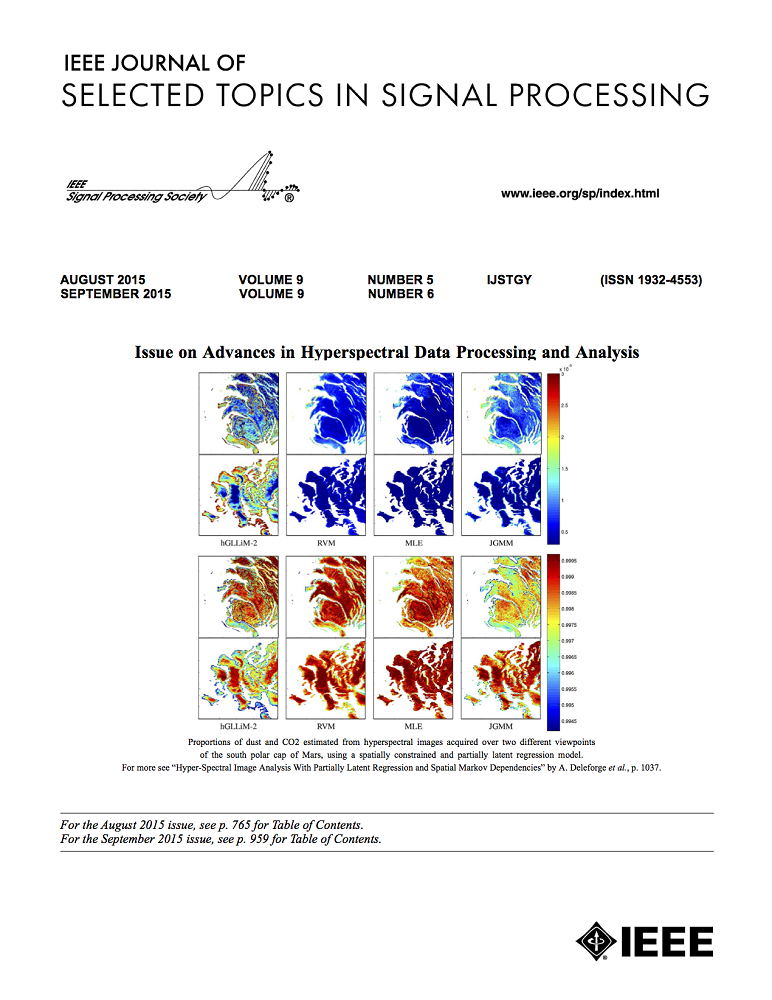A Two-Stage Audio-Visual Speech Separation Method Without Visual Signals for Testing and Tuples Loss With Dynamic Margin
IF 8.7
1区 工程技术
Q1 ENGINEERING, ELECTRICAL & ELECTRONIC
IEEE Journal of Selected Topics in Signal Processing
Pub Date : 2024-07-12
DOI:10.1109/JSTSP.2024.3427424
引用次数: 0
Abstract
Speech separation as a fundamental task in signal processing can be used in many types of intelligent robots, and audio-visual (AV) speech separation has been proven to be superior to audio-only speech separation. In current AV speech separation methods, visual information plays a pivotal role not only during network training but also during testing. However, due to various factors in real environments, sensors do not always possible to obtain high-quality visual signals. In this paper, we propose an effective two-stage AV speech separation model that introduces a new approach of visual feature embedding, where visual information is used to optimize the separation network during training, but no visual input is required during testing. Different from the current methods which fuse visual features and audio features together as the input of the separation network, in this model, visual features are embedded into AV matching block to calculate the cross-modal consistency loss, which is used as part of the loss function for network optimization. A novel tuples loss function with a learnable dynamic margin is proposed for better AV matching, and two margin change strategies are given. The proposed two-stage AV speech separation method is evaluated on the widely used GRID and VoxCeleb2 datasets. Experimental results show that the performance outperforms current AV speech separation methods.一种无视觉信号测试的两阶段视听语音分离方法和具有动态余量的图元丢失方法
语音分离作为信号处理中的一项基本任务,可用于多种类型的智能机器人,而视听(AV)语音分离已被证明优于纯音频语音分离。在目前的视听语音分离方法中,视觉信息不仅在网络训练过程中起着关键作用,在测试过程中也是如此。然而,由于实际环境中的各种因素,传感器并不总能获得高质量的视觉信号。本文提出了一种有效的两阶段视听语音分离模型,引入了视觉特征嵌入的新方法,即在训练过程中使用视觉信息优化分离网络,而在测试过程中不需要视觉输入。与目前将视觉特征和音频特征融合在一起作为分离网络输入的方法不同,在该模型中,视觉特征被嵌入到影音匹配块中,以计算跨模态一致性损失,并将其作为网络优化损失函数的一部分。为了更好地进行视听匹配,提出了一种具有可学习动态余量的新型元组损失函数,并给出了两种余量变化策略。在广泛使用的 GRID 和 VoxCeleb2 数据集上评估了所提出的两阶段影音语音分离方法。实验结果表明,该方法的性能优于当前的 AV 语音分离方法。
本文章由计算机程序翻译,如有差异,请以英文原文为准。
求助全文
约1分钟内获得全文
求助全文
来源期刊

IEEE Journal of Selected Topics in Signal Processing
工程技术-工程:电子与电气
CiteScore
19.00
自引率
1.30%
发文量
135
审稿时长
3 months
期刊介绍:
The IEEE Journal of Selected Topics in Signal Processing (JSTSP) focuses on the Field of Interest of the IEEE Signal Processing Society, which encompasses the theory and application of various signal processing techniques. These techniques include filtering, coding, transmitting, estimating, detecting, analyzing, recognizing, synthesizing, recording, and reproducing signals using digital or analog devices. The term "signal" covers a wide range of data types, including audio, video, speech, image, communication, geophysical, sonar, radar, medical, musical, and others.
The journal format allows for in-depth exploration of signal processing topics, enabling the Society to cover both established and emerging areas. This includes interdisciplinary fields such as biomedical engineering and language processing, as well as areas not traditionally associated with engineering.
 求助内容:
求助内容: 应助结果提醒方式:
应助结果提醒方式:


